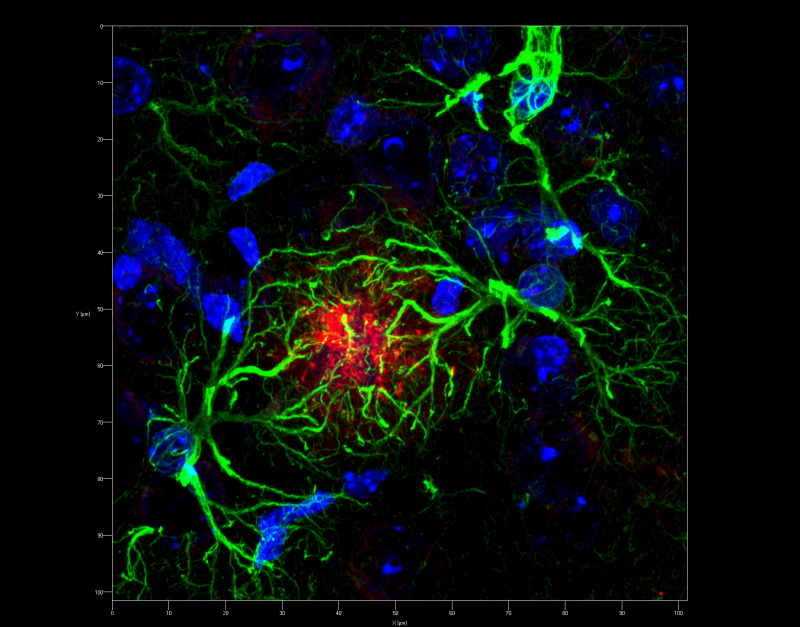University of Oslo researchers confirm new mechanism for Alzheimer's disease

Jens Pahnke and his team at the University of Oslo has recently published results in the prestigious scientific journal Brain showing that decreased removal of toxic peptides in the brain causes the onset and first clinical signs of Alzheimer's disease, rather than overproduction as has previously been assumed. This information can now be used to target specific genes to enhance their function in the brain of elderly or people at risk.
World-wide, researchers try to discover the cause for sporadic Alzheimer's disease which comprises 99% of all Alzheimer's disease patients. Alzheimer's patients develop deposits of toxic peptides in the brain that lead to the destruction of the neuronal networks and to clinical signs of disorientation, memory loss, behavioural changes, and finally to death. By generating a transgene-free mouse model for the more common sporadic form of the disease, the Pahnke team produced results that support the hypothesis of insufficient removal of toxic metabolites in sporadic Alzheimer's disease. The model animals develop early signs of the disease after 1.5 years of age, precisely at the locations where the first changes appear in Alzheimer's patients.
Normally, human mutated genes are used to generate animal models of Alzheimer's disease. Pahnke and his colleagues used a method in which they destructed the function of two genes in the brain that are needed to excrete and digest the toxic Alzheimer's peptide amyloid-beta. This represents a new model enabling investigations without artificial overexpression of inherited Alzheimer's disease genes.
The Pahnke lab is internationally renowned for its discoveries of disturbed export mechanisms in sporadic Alzheimer's disease. The lab was recently moved to Norway after Jens Pahnke was appointed professor at the University of Oslo's Faculty of medicine. Pahnke's team has developed new treatment strategies based on clearance mechanisms at the brains vasculature. These treatments are highly effective in a subset of patients and are used in Germany, Switzerland, Austria, and the USA.
Recent developments of Pahnke and his collaborators aim on medicinal plants that produce ABC transporter-activating agents and can be easily applied as natural medication in patients. These innovative projects are now started in Oslo as the internationally leading centre for research on Alzheimer disease, ABC transporters, and medicinal plants.
More information: "Accumulation of murine amyloid-{beta} mimics early Alzheimer's disease." Brain 2015; DOI: 10.1093/brain/awv137



















